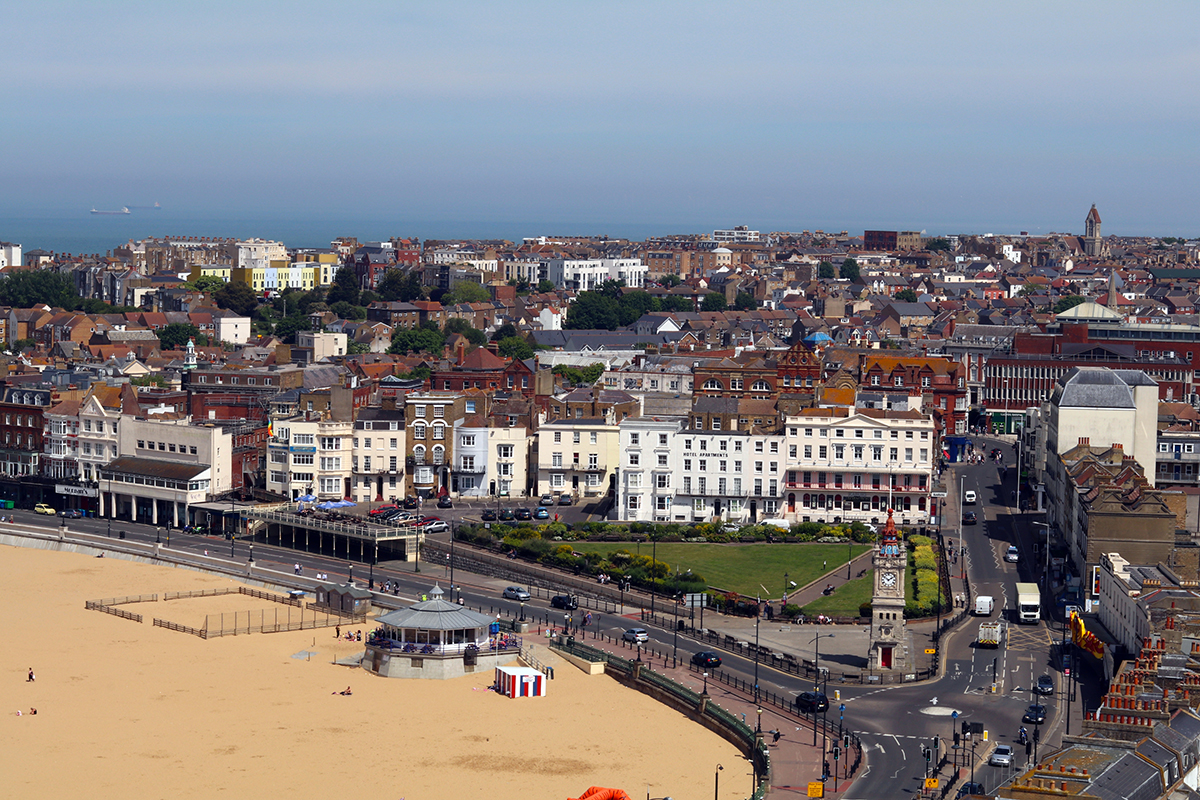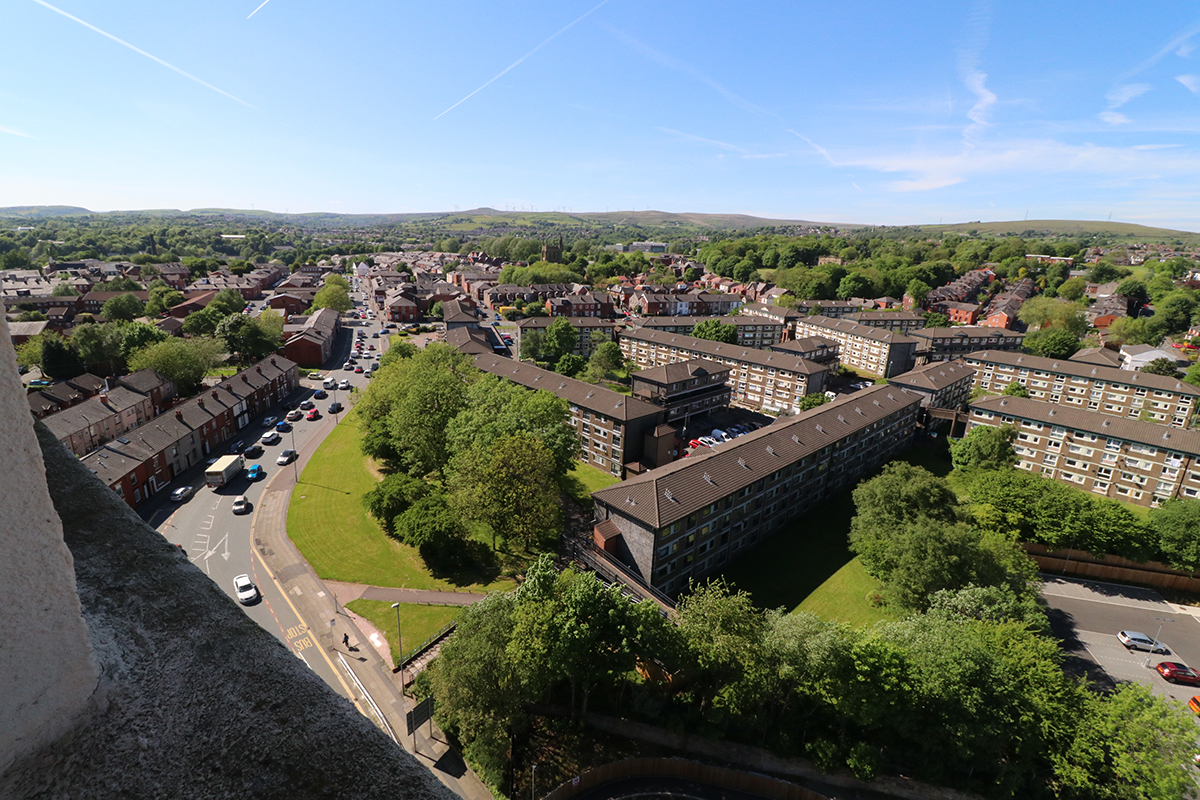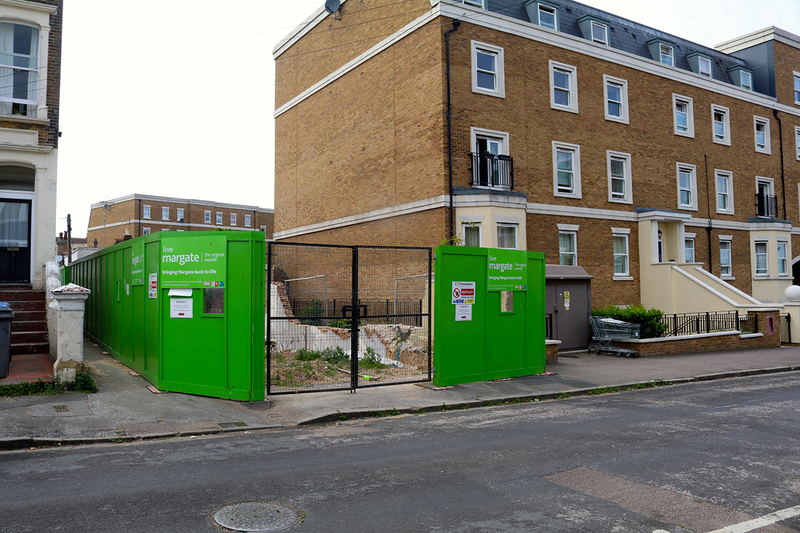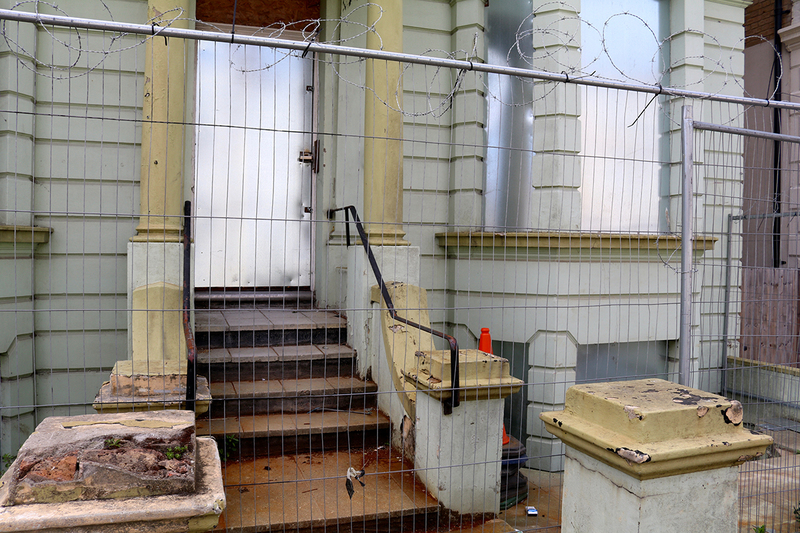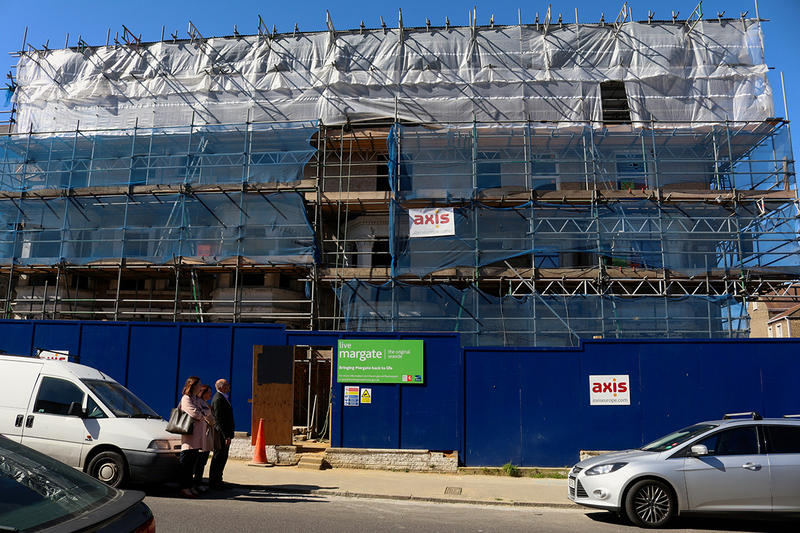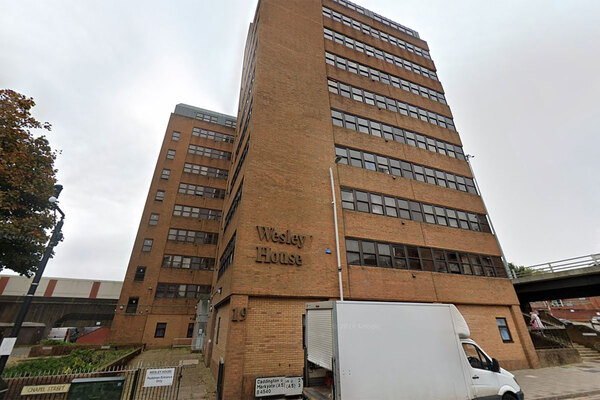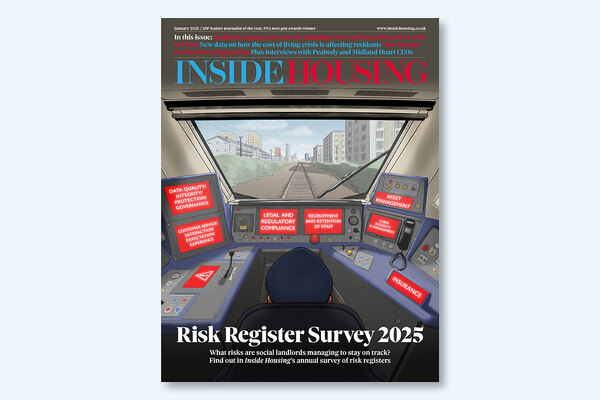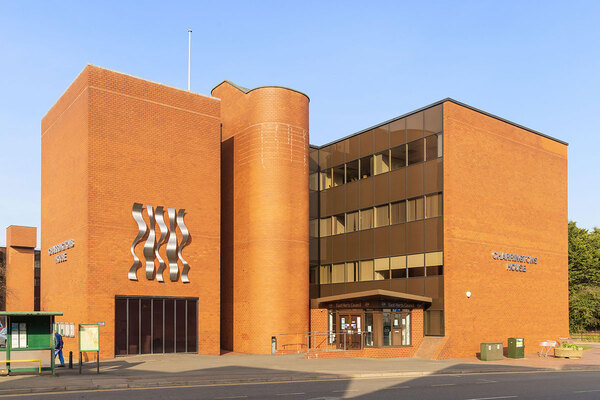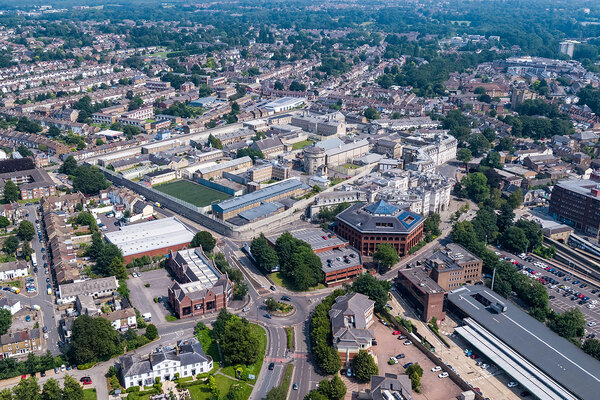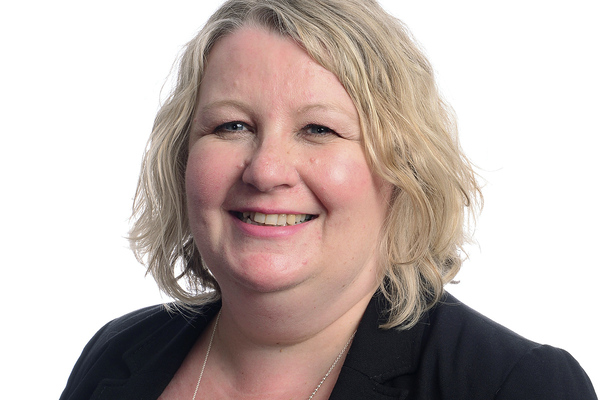You are viewing 1 of your 1 free articles
Heaven Kent? : Margate's regeneration
Margate’s once thriving seaside community has fallen on hard times. Is a new attempt to rebrand the town working – or is it just social engineering? Charlotte England heads to the Kent coast to find out. Photography by Charlotte England.
Margate is changing. After several decades of decline, Kent’s ‘original seaside’ destination is enjoying a renaissance. Between July 2015 and July 2016 house prices rose 12.5%, with the town recently voted the fourth ‘hippest’ place to live in the UK - earning it the nickname ‘Shoreditch-on-Sea’.
But the pace of change means the town’s most vulnerable residents are at risk of being abandoned.
Cliftonville, a suburb a few streets to the east of the old town, is one of the poorest parts of the country. In 2011, Inside Housing described it as a ‘seaside slum’, about to be hit by an influx of new housing benefit tenants pushed out of more expensive places by rising rents.
Diverging views
Today, 70% of property in Cliftonville is private rented - far above the national average of around 18% - with a large proportion of those renters claiming housing benefit. Many dwellings are shabby bedsits in vast, decrepit Edwardian houses and former hotels.
Among the tenants are care leavers, placed in Thanet years ago by other councils in Kent and London.
In 2012, Thanet District Council recognised the need to close the widening gulf between Cliftonville and the rest of the town. It launched an ambitious intervention: a decade-long scheme, which has now hit its midpoint, to regenerate the area. Already amid the poverty, there are signs of an upturn in Cliftonville.
In total, £23.1m has been budgeted by Thanet and Kent councils to purchase 300 dwellings - mostly ‘disused’ houses of multiple occupation (HMOs) - and convert them into a smaller number of family homes. A third of these will be retained by the council as new affordable rented housing and the remainder will be sold. By changing the tenure of 10% of the area’s total housing stock, the council hopes to rebalance Cliftonville, making it more appealing to investors and owner-occupiers.
Five years into the ‘Live Margate’ scheme, Thanet District Council is ahead of schedule and hailing the project a success. But on the ground the picture is more complex; some residents say the local authority is selling them out to rich Londoners, while charities report that the forced closure of supported housing for vulnerable people has made their work more difficult.
In response, the council points out that almost every shop on Cliftonville’s high street, Northdown Road, is occupied.
“The type of shop is changing as well,” says a spokesperson, pointing to the jewel in Cliftonville’s cafe crown: Cliffs, a coffee and record shop, with an in-house yoga studio, and an Aveda hair salon. “It’s the kind of place you’d think of [as being] in London.”
Cliftonville is not east London yet. Cliffs is an oddity, seemingly out of place among the visible poverty of the area. But it shows the area’s potential to entice a steady stream of Londoners moving to Margate.
Before it was poor, Cliftonville was rich. The legacy of this is grand architecture - high ceilings and period features. But the small units, the large number of derelict properties and the area’s bad reputation have stopped people investing here. Live Margate is trying to change this. Ashley Stacey, strategic housing manager at Thanet District Council, says it’s working: “In the data we’ve seen most recently on Cliftonville, the gap [between the area and the rest of Margate] has actually closed… It’s starting to turn a corner.”
In March, the council launched a new scheme under the Live Margate umbrella to offer owner-occupiers who move into empty properties in the ‘intervention area’ £20,000 loans to bring them back into use - two were claimed in the first eight weeks.
Sweyn Road is one of several streets connecting Northdown Road to the seafront. Here, a disused hotel has had its front extension ripped off and is being converted into maisonettes and flats for families on the housing waiting list.
Opposite, a homeowner says he is delighted by the development. “It’s great,” he enthuses, explaining that he has been pressuring the council to fix the site for four years.
A few streets along, on Surrey Road, Tony and Sarah West live in a four-bed hotel conversion - the first property let by Thanet Council under the Live Margate scheme. Four years in, the couple still cannot believe their good fortune. “I think I am the luckiest person on this Earth to get this house,” Ms West says.
Eighty-six families from Thanet’s housing register bid on the £148-a-week property. The Wests have five children, two of whom have autism. Ms West cares for her son and daughter full time, while her husband fits blinds for “posh people” in nearby Broadstairs, but his income varies and is often too low to comfortably support a family of seven.
Before moving into the property, they rented privately. Money was tight and the house was always damp. They say the council house has “changed their lives”.
Breaking the cycle
But although the Live Margate scheme is creating new council housing in Cliftonville for the first time, Bob Porter, head of housing at Thanet Council, says the project is not only about the area’s most vulnerable residents. “The idea really is that the tenure is much more mixed up,” he says. According to the council, Margate has never had more than 10% social or affordable housing. “I think that’s because historically it’s always been a seaside place,” says Ms Stacey — and there was none at all in Cliftonville.
There are 2,737 people on the housing waiting list in Thanet. The dearth of council properties has fuelled the rise of private landlords and HMOs. In turn, cheap housing has attracted more vulnerable people to the area. The council hopes turning HMOs back into family homes will break the cycle.
The council has implemented a planning policy banning new one-bed flats in the intervention area. It has also asked charities to put supported housing accommodation and shelters elsewhere and asked Kent County Council not to fund these kind of projects in Cliftonville.
At least two shelters have closed as a result. “We do need that sort of accommodation but not in Cliftonville,” Mr Porter says, adding that providers have been asked to find sites elsewhere in the district. “It’s all about creating balance.”
Although turning HMOs into council flats reduces the overall number of affordable dwellings, it improves the quality and brings them under council control. “We’ve taken out about 100 bedsits and turned them into 40 flats,” continues Mr Porter. “They’re bigger, they’re better quality.”
He suggests that families in affordable housing are likely to stay longer than the ‘transient’ populations of HMOs or supported housing, which is good for the community. HMOs in the area have long been associated with anti-social behaviour; there has been a 27% reduction in anti-social behaviour since Live Margate came on the scene.
But not all residents support the scheme. Lisa Jones (not her real name) is a cleaner, working in HMOs, hotels and apartment blocks. After almost a decade in Cliftonville she says the only changes she has seen are rising rents and displacement.
She argues that higher property prices are not a positive in an area where very few residents can afford to buy their own home. Instead, people from London - courted by the council - are moving in or buying investment properties and listing them on Airbnb. “Whatever they’re doing, the Margate people are not benefiting,” she insists.
One HMO on Godwin Road is a case in point. “Fifty-six people lived in that [building] and [the council] closed [the landlord] down,” recalls Ms Jones. “Fifty-six people were homeless at Christmas.”
The council’s Ms Stacey remembers the HMO. “I’m sure it was because of our enforcement that it was closed,” she says. “It was substandard accommodation and we put pressure on [the landlord] to move people out because it wasn’t suitable for their needs. But those people weren’t evicted and made homeless; they would have been rehoused by our housing team.”
Ms Jones says this is not true. Other local residents also report seeing dozens of rough sleepers living on the beach and in nearby Dane Park in December.
Closing the most visible HMOs is not about helping locals, Ms Jones argues, but about making the area look better to “outsiders” at the expense of Cliftonville’s most vulnerable residents. “Where are all those people [HMO tenants] going to go, then?” she asks. “Nobody wants to be in those sorts of places. They’re there because there’s nowhere else for them. Except the streets.”
Thanet Council disputes allegations it has made anyone homeless. In addition to providing new affordable housing, it has established a multi-agency task force that is designed to deliver “front-end, fast-track interventions jointly at street level on a day in, day out basis” to help the most needy people in the intervention area, a spokesperson says. It also operated a winter shelter for rough sleepers.
Dwindling options
But Mike Barrett, chief executive of Kent-based homelessness charity Porchlight, says the closure of HMOs and two supported housing projects in the area has made things “much more difficult” for organisations like his. Thanet has seen one of the largest increases in rough sleeping in Kent in recent years, with Porchlight counting 97 rough sleepers in 2016/17 compared with just 55 the year before. That is a 76% increase, compared with a 24% rise in neighbouring Canterbury. The Cliftonville regeneration has contributed to this, Mr Barrett says, by taking out “some very accessible short-term accommodation”.
Meanwhile, closing the supported housing projects has “wiped off the map any kind of resource for vulnerable youngsters in Thanet”. The nearest supported housing scheme for young people is now more than 20 miles away in Canterbury.
Asking that supported housing projects and shelters are placed elsewhere in the district is all very well in theory, says Mr Barrett, but in reality only property in Cliftonville is affordable. Porchlight has had to move people out of the area entirely, “and that compounded some of their problems, because they were losing their support networks”.
The historic policy of placing care-leavers and foster children in Cliftonville has left the area “with a residue of quite vulnerable young people”, Mr Barrett says. With thousands of people already waiting for social housing in Thanet, and young, single people considered a low priority, replacing HMOs and shelters with a smaller number of council houses leaves them with dwindling options.
The Live Margate scheme aims to reduce deprivation rates in Cliftonville, but some believe the council is tackling deprivation in the area by forcing the most deprived people out, rather than by helping them.
“It’s the same old story in any regeneration area,” Mr Barrett says. “Most councils think ‘let’s get rid of them and then that will do away with the problem’.” A better solution to deprivation and anti-social behaviour in Cliftonville would be to increase support, not to take it away, Mr Barrett says. “Supported housing providers can play a key role in regeneration,” he says. “We can help people who find it difficult to maintain tenancies. But if we’re not included, we can’t do anything.”
As it stands, it looks like Cliftonville will regenerate in line with the rest of Margate. Property prices will probably continue to rise and anti-social behaviour will steadily fall thanks to the council’s intervention. Some needy families will move into high quality new social housing and benefit immensely, while buyers will migrate from London and other big cities to be their neighbours.
But, in a story familiar to other parts of the country, the most deprived people in the area are at risk of losing out.
